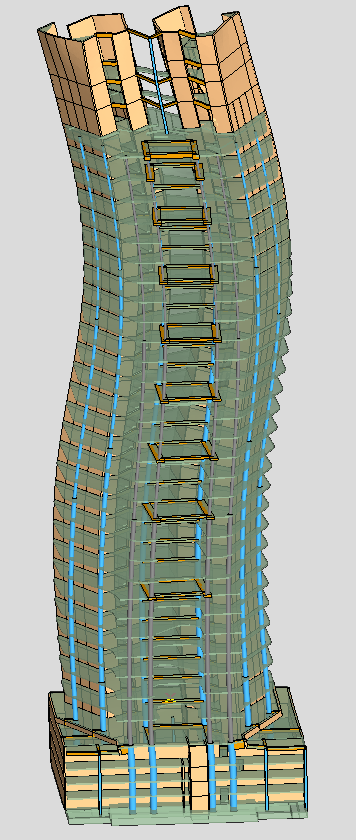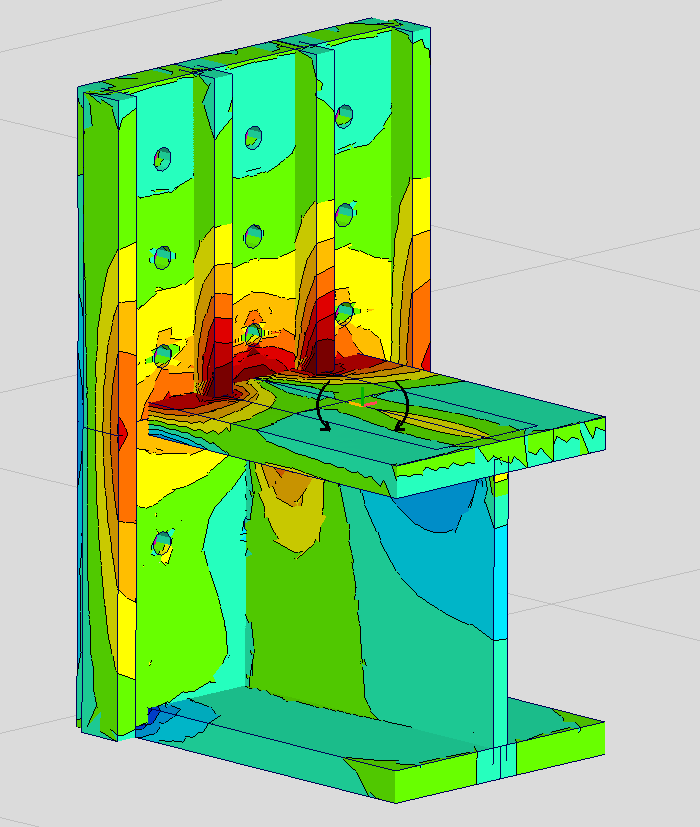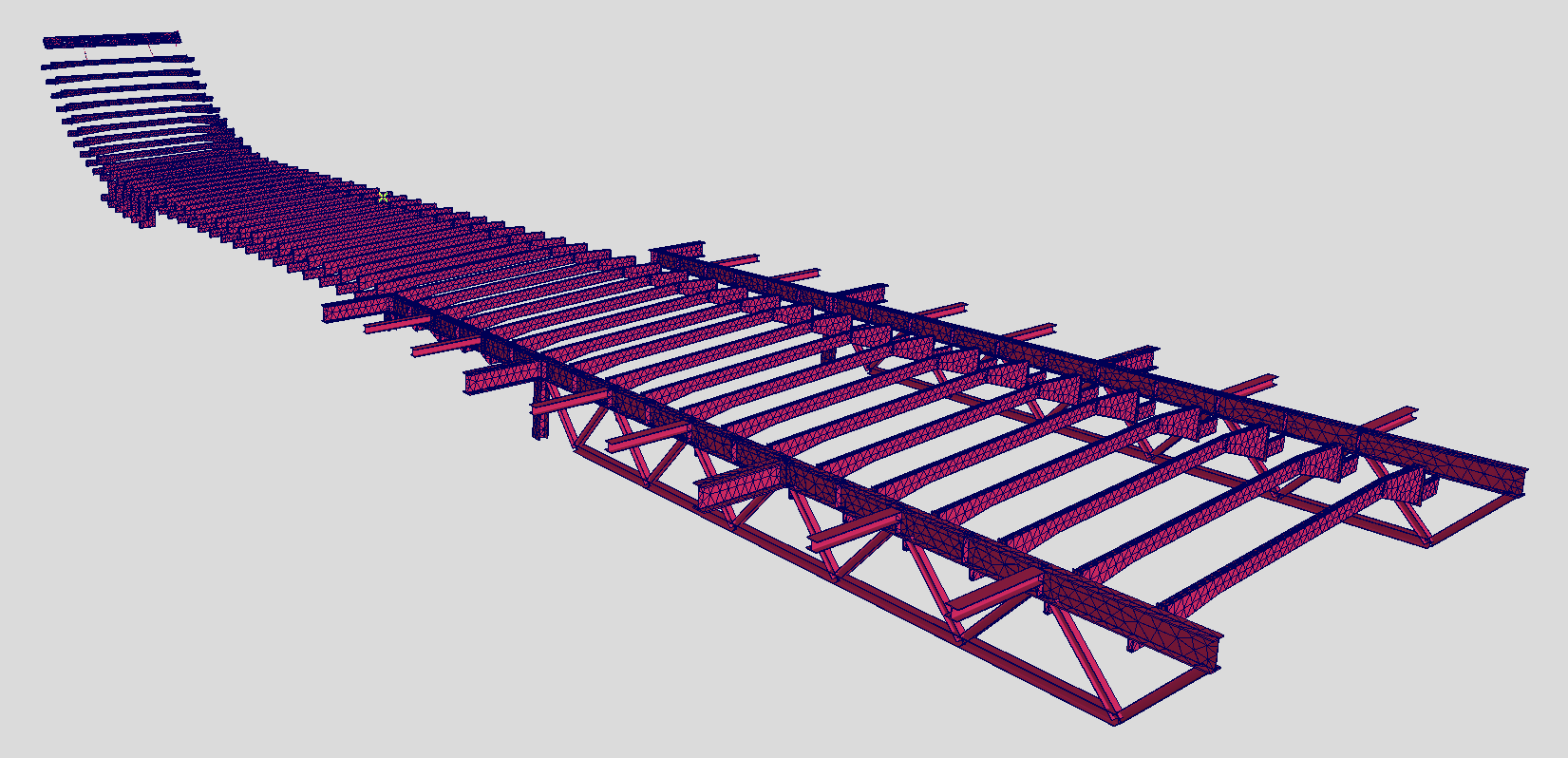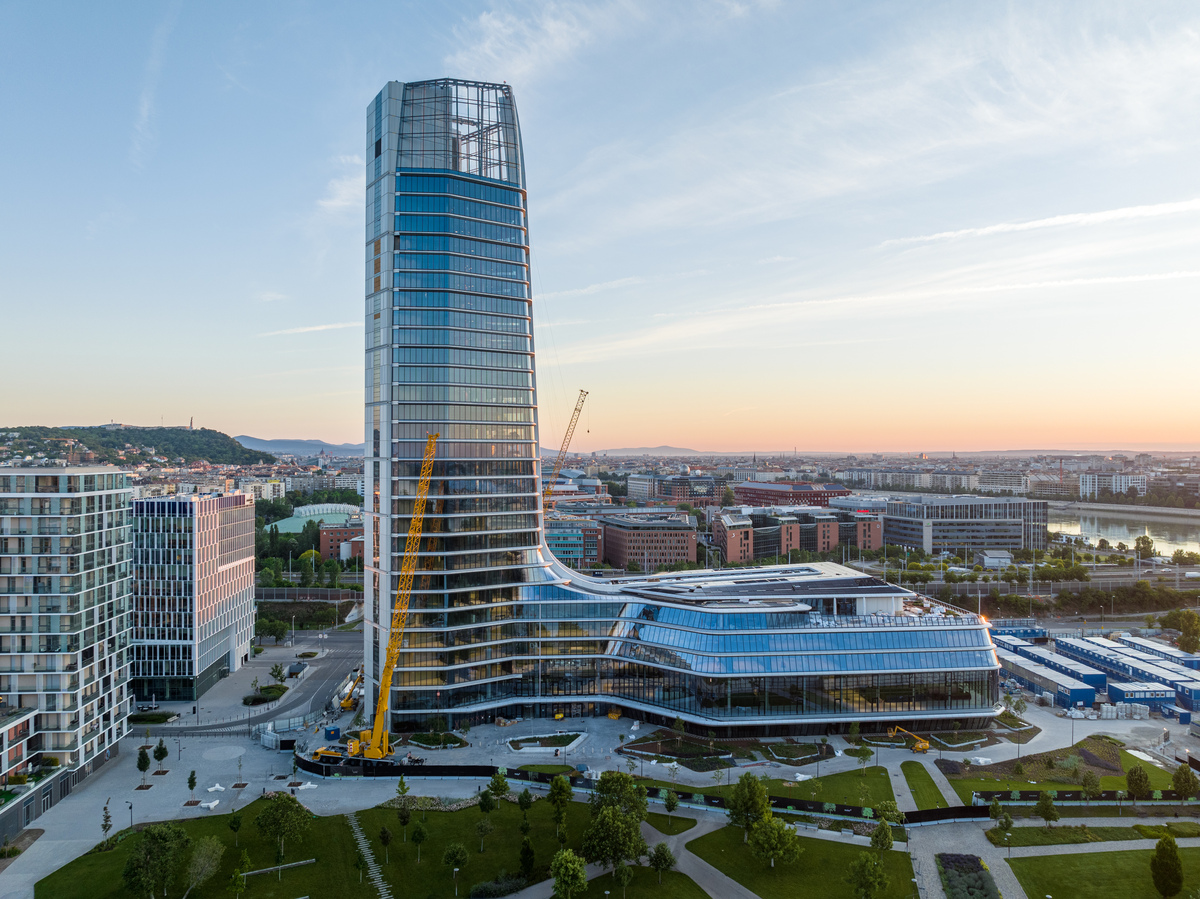CUSTOMER PROJECTS
MOL CAMPUS
BUDAPEST, HUNGARY
STRUCTURAL DESIGN:
ARCHITECTURE:
YEAR:
Foster and Prtners / Finta Studio
Hydrastat
2022
PROJECT DESCRIPTION
Brief presentation of the project
The MOL Campus is an office building with a useful floor area of 86,000 m2, built in Lágymányosi Bay. It has two main structural units: the tower and the podium building. Below the office building there are four levels of basement level without structural expansion, which in terms of its structural system is a monolithic, flat-plate slabs with a reinforced concrete frame building, the stability of which is provided by two bracing cores on the tower building part, while four stiffening cores on the podium. The superstructure was divided into two structural expansion units. The parts of the tower building above ground level: ground floor + 28 floors, the average height of which varies between 4.0 and 4.5 meters. The reinforced concrete slabs have a post-tensioned adhesive pad system. Above the office floors, there is a roof terrace that can be visited by the general public, surrounded by a 24-meter high “crown” steel structure. Above-ground parts of the podium: ground floor + 5 floors, mechanical level. Like the tower, the slabs were made with post-tensioned adhesive pads. The functional connection of the two parts of the building is ensured by pedestrian bridges between the 1st and 5th floors. The total structural height of the tower, measured from the foundation, is ~158 meters, while that of the podium is ~41 meters. The vibration test of the building, the calculation of the supporting structure of the reinforced concrete slabs made with traditional soft reinforcement, the dimensioning of the pedestrian bridges designed as a mule structure, and the analysis of the steel structures of the building were dimensioned using AXISVM software.Examination of bracing system
The supporting structure of the tower block and the podium were tested separately in two separate models. For the analysis of the tower building, several calculation models were prepared, in which the structural elements (walls, slabs, columns) were given different stiffness settings, depending on whether the goal was to determine the building’s seismic behavior, wind dynamic behavior, or building movements necessary for facade design. The virtual rod function of AXIS VM was very helpful for the dimensioning of the stiffening core of the tower building, with which the stresses of the examined wall bodies can be precisely determined, thus helping to verify the ductility of the complex wall bodies. The complex wall bodies of the bracing cores were modeled using shell models, while the coupling beams ensuring their working together were modeled using bar elements. Taking into account the stiffness settings recommended by the international literature, the natural frequencies of the building were determined for the wind dynamic and wind comfort tests, as well as for the seismic dimensioning of the building. Taking advantage of the opportunity provided by AXISVM, the seismic loads were determined using a unique response spectrum curve according to the values of the local response spectrum curve. Another interesting thing is that due to the building’s frequency range, the relationship between the building’s seismic loads and the building’s movement is not linear. Thus, the displacement and stresses of the building caused by seismic loads were determined from two different spectrum curves. The former is flexible, while the latter is with the help of the design spectrum curve.

Load stairs extending over time caused by construction, creep and shrinkage of concrete, or the effect of all these on the structural deformation was taken into account during the calculations carried out in the finite element program by using individual partial load combinations. The final deformation of the building resulted from the numerical combination of the deformations caused by the loading stairs, taking into account the geometric corrections during construction.
Modeling of steel structures
The building structure is also made up of several unique steel assemblies, which distribute stress and its adequacy was examined on nodal models constructed from shell elements, using a nonlinear material model and second-order calculation.
Above the central atrium of the podium part of the building, a 70-meter-long, 11-meter-span glass roof – fixed directly to the supporting structure – was built. The glass roof is supported by a beam made of welded closed sections with a trapezoidal cross-section, of varying height, distributed every 1.35 meters. Due to the strict deformation limitation of the glass roof, it was necessary to analyze the movement of the supporting structure as accurately as possible, taking into account the local loads caused by the maintenance crane track suspended on the glass roof, as well as the fall protection and the stretched shades. Due to the complex geometry of the supports, the entire steel structure was modeled as a shell element using the AXISVM program.

















